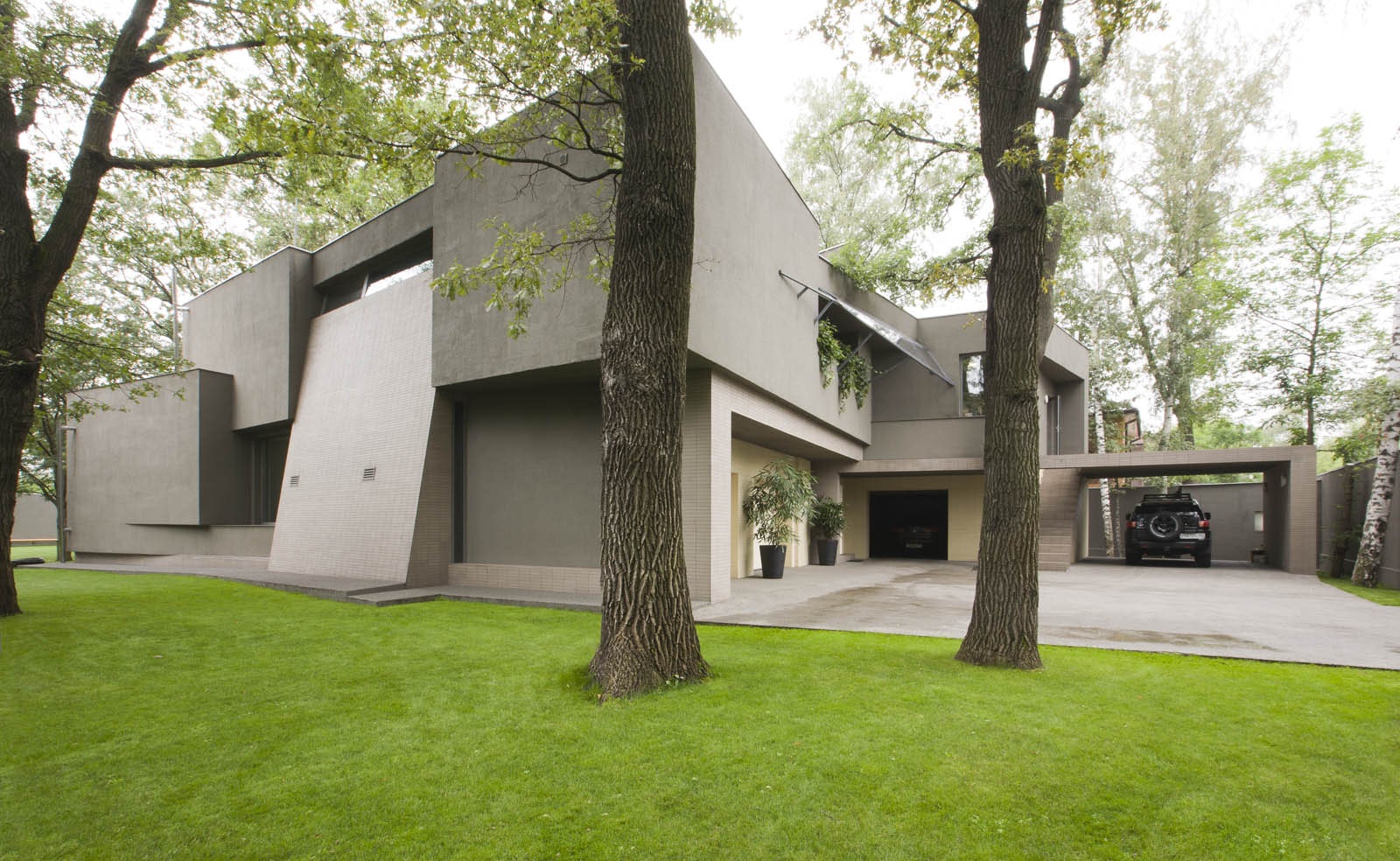There’s a familiar expression in Russian, На Кудыкину гору, or “To Kudikino Hill.” Repeated as a playful answer to the question “Where are you going?”, it is used to refer to someplace faraway or imaginary.
In Moscow, building fabrics can be seemingly nondescript, especially in the residential sector — but things have begun to change in the capital city. Russian architecture is undergoing a dramatic transformation to build upon Eastern Slavic roots and Kievan Rus’ traditions, realizing new public projects while rethinking contemporary private designs. Championing new concepts and imaginary ideas, modern projects across Moscow are increasingly built to break with tradition.
Taking inspiration from Kudikino Hill, the following collection explores novel residential designs throughout Russia’s capital. Built to capture the imagination and rethink normative building techniques, each project plays with unique forms and spatial arrangements. While they are all urban in nature, they take widely different approaches to defining private space through site, scale and enclosure. As bold explorations into daily life, each design emerges from a common context to provoke and inspire.

© T+T Architects

© T+T Architects

© T+T Architects
STUDIO #8 by T+T Architects, Moscow, Russia
Built around the concept of live/work, these loft-style apartments were made among a run-down factory. Different spaces were designed through unique attic floors, facing façades and loft-style public spaces.

© DNK ag

© DNK ag
House for Two Brothers by DNK ag, Moscow, Russia
Located on a site bordering a brother’s property, this residence was created with a “seemingly accidental geometry” that plays with the semi-urban context. The design combines a coarse slate façade with a courtyard and rooms that face the woods.

© Roman Leonidov Architects

© Roman Leonidov Architects
Sailor House by Roman Leonidov Architects, Moscow, Russia
Sailor House was designed with sweeping forms across multiple floors. Irregular glazing combines with expressive curves to define indoor and outdoor space, as well as establish a unique wood and metal envelope.

© Milstone Sarl

© Milstone Sarl
Davinci Haus Moskau by Milstone Sarl, Moscow, Russia
Expanding upon a vernacular building language, the Davinci Haus was carefully sited among a diverse natural landscape. A black structural system establishes grids and dividers that define programmatic areas while giving the residence a distinct character.

© Kerimov Architects

© Kerimov Architects

© Kerimov Architects
Anex – Banqueting house by Shamsudin Kerimov Architects, Moscow, Russia
Created as a small annex, this project invites guests to sit on the veranda. The project connects to a banqueting house, fireplace and roof garden for relaxing and gathering.

© POLYGON

© POLYGON
First Active House in Russia by POLYGON, Moscow, Russia
As the first active house in Russia, this residence was conceptually organized around the idea of integration. Using scale to create a modern twist on tradition, the project frames interior and exterior space through geometry, boundaries and light.

© e-kulibaba.ru

© e-kulibaba.ru
House in Moscow Region by M2 Architectural Group, Moscow, Russia
Forming an elegant and warm space for living, this house was carefully organized around the natural landscape. Oriented to light and views, the two-story project is surrounded by a birch forest and centers around the living room.

© Gikalo Kuptsov Architects

© Gikalo Kuptsov Architects

© Gikalo Kuptsov Architects
Villa Rastoguyevo by Gikalo Kuptsov Architects, Moscow, Russia
Made with three square volumes, the Villa Rastorguyevo was formed with three semi-closed courtyards that each have their own function. While one leads to the main entrance and the second to a low terrace, the third courtyard serves as a kitchen garden.

© za bor architects

© za bor architects
House of Mr. R by za bor architects, Moscow, Russia
Built with a solid-cast reinforced concrete frame, this Moscow house uses irregular forms along the façade to enclose areas for picnics, sunbathing and living quarters. The home’s construction respected the site’s natural landscape and no trees were removed.

© 4a Architekten GmbH

© 4a Architekten GmbH

© 4a Architekten GmbH
Modernisation House N by 4a Architekten GmbH, Moscow, Russian
Modernisation House N breaks with a traditional mold through a redesign process. Reinterpreting the original structure, the new envelope features a glazed shell around the existing building structure. Inside, spaces were made to better integrate with one another while celebrating the new building organization.




